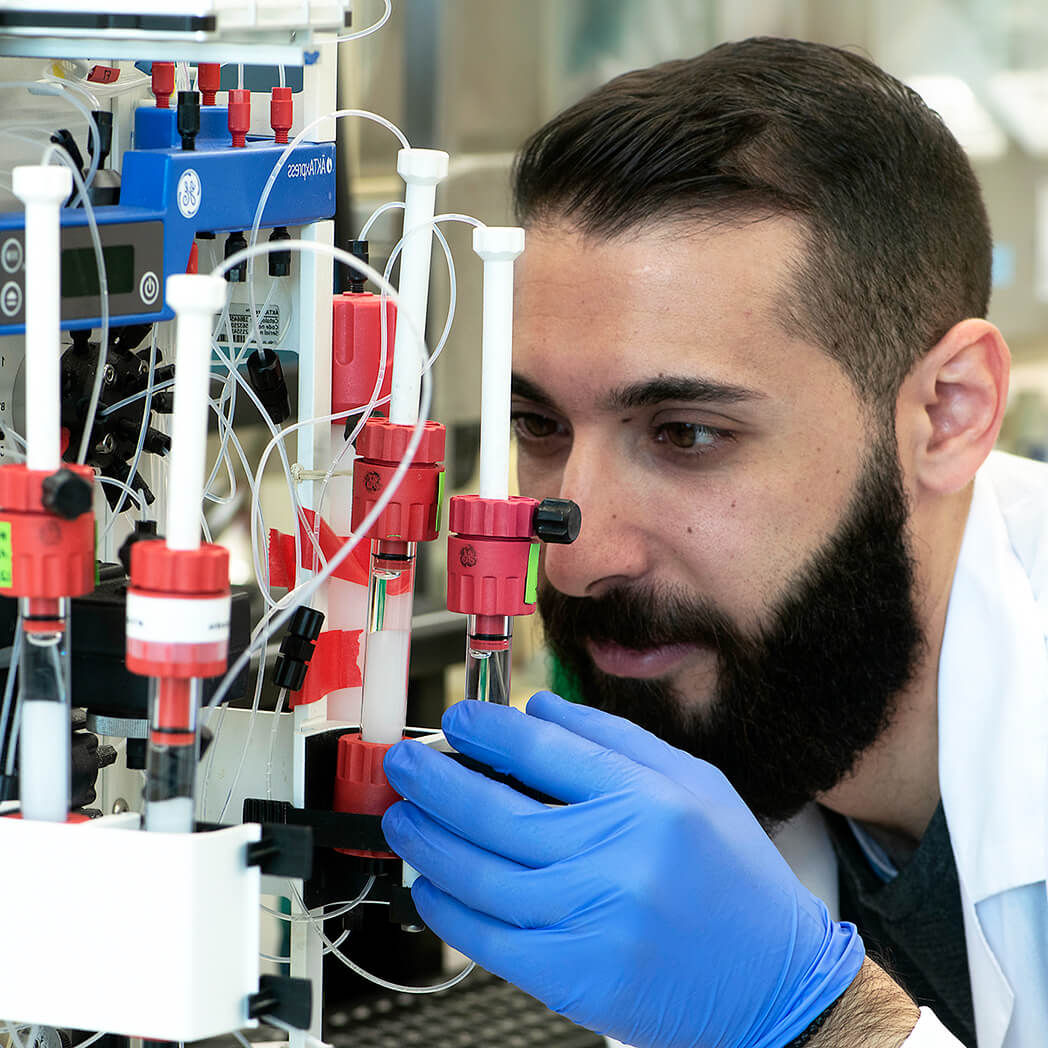Overview
|
XE991 (#X-100) is a highly pure, synthetic, and biologically active compound.
Applications
 Alomone Labs XE991 blocks KCNQ2/KCNQ3 channels heterologously expressed in Xenopus oocytes.A. Time course of KCNQ2/KCNQ3 maximal current amplitude, elicited by 700 ms voltage step from holding potential of -100 mV to -30 mV, delivered every 10 seconds. Application of 100 µM XE991 (#X-100) inhibits the KCNQ2/KCNQ3 current in a reversible manner (indicated by the horizontal bar). B. Representative current traces before and during application of 100 µM XE991 as indicated.
Alomone Labs XE991 blocks KCNQ2/KCNQ3 channels heterologously expressed in Xenopus oocytes.A. Time course of KCNQ2/KCNQ3 maximal current amplitude, elicited by 700 ms voltage step from holding potential of -100 mV to -30 mV, delivered every 10 seconds. Application of 100 µM XE991 (#X-100) inhibits the KCNQ2/KCNQ3 current in a reversible manner (indicated by the horizontal bar). B. Representative current traces before and during application of 100 µM XE991 as indicated.
Citations (2)
- Muqeem, T. et al. (2018) J. Neurosci. 38, 3729.
- Nassoiy, S.P. et al. (2017) J. Biomed. Sci. 24, 8.
Specifications
Technical Specifications
Biological Activity
- Wang, H.S. et al. (2000) Mol. Pharmacol. 57, 1218.
Solubility and Storage
Scientific Background
Voltage-gated K+ channels of the KCNQ family (KV7) are widely expressed in nerves and smooth muscles where their general role is to hyperpolarise the cell membrane and thereby dampen excitability1.
XE991 is a potent and selective blocker of KCNQ voltage-gated K+ channels. It blocks KV7.2 + KV7.3 (KCNQ2 + KCNQ3)/M-currents (IC50 = 0.6 μM) and KV7.1 (KCNQ1) homomeric channels (IC50 = 0.75 μM) but is less potent against KV7.1/minK channels (IC50 = 11.1 μM)1. Suppression of the M-current causes an increase in intrinsic excitability2. XE991 enhances acetylcholine release from rat brain slices (EC50 = 490 nM) and shows good in vivo potency and duration of action, suggesting utility in Alzheimer’s disease therapeutics2. It was demonstrated that XE991 enhances learning and memory in healthy mice3.
- Yeung, S.Y. and Greenwood, I.A. (2005) Br J Pharmacol. 146, 585.
- Zaczek, R. et al. (1998) Pharmacol. Exp. Ther. 285, 724.
- Fontán-Lozano, A. et al. (2009) Hippocampus 21, 22.

